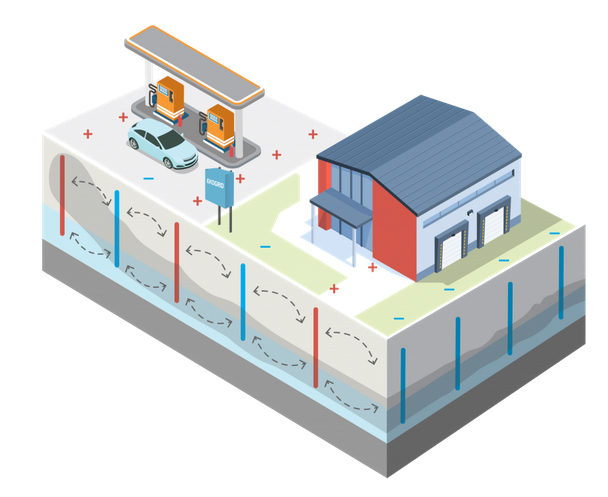EKOGRID™ enhanced bioremediation processes are the basis of all projects we participate in. Applications include remediation with EKOGRID™ system alone and in combination with other remediation solutions. EKOGRID™ solution can be also used to transfer bioremediation supporting agents to targeted areas in both contaminated saturated and unsaturated zones.
EKOGRID™ Electrokinetic Remediation solution cleverly utilizes certain electrokinetic and electrochemical reactions to enhance bioremediation and break down organic pollutants in soil, groundwater and sediment (in situ or ex situ). Optimized pulsed voltage patterns, essential for the proper functioning of this method, are transmitted by EKOGRID™ control unit, which programming is optimized to each site.
EKOGRID™ is an advanced in situ remediation technology which enhances natural processes and supports complementary remediation methods. EKOGRID™ utilizes electrochemical phenomena to generate chemical radicals on soil particle surfaces and electrokinetic and electro osmotic phenomena to increase availability of organic contaminants for bioremediation, chemical degradation or mechanical removal.

EKOGRID is an electrokinetic method that utilizes natural well-known phenomena and reactions:
The core of this unique system:
EKOGRIDTM patented products and technologies are cost-effective, simple to install, and safe to use both for the operators and the environment.
With the correct settings made in the commissioning phase, our system utilizes the capacitive nature of the soil matrix. Reactions will occur at the surface of each soil particle, precisely where the pollution is and everywhere between the electrodes -not just at the installed electrodes. As a result, no energy will be wasted and the system will consume extremely low levels of energy. The effect can be quickly seen in the form of reduced pollutant concentrations in the soil and groundwater as well as stabilized ORP and dissolved oxygen levels.
The technology has proven to work on a substantially wide range of organic pollutants in the ground, ground water and bottom sediments, including: